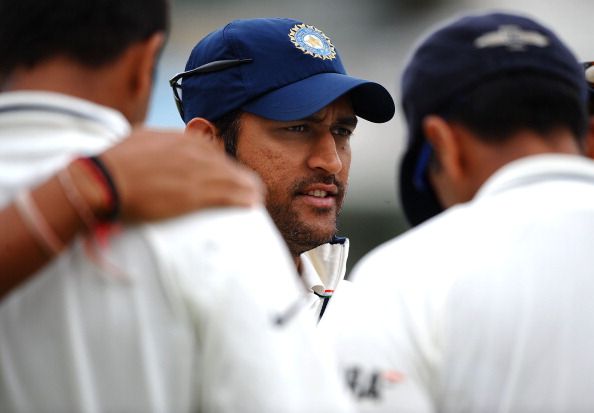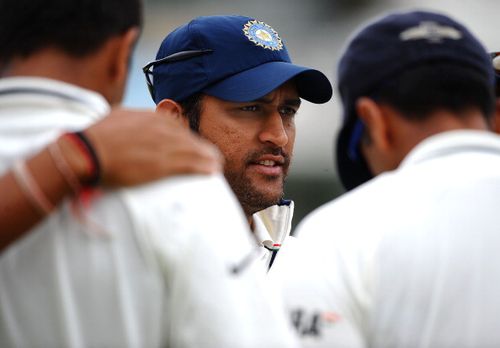
Where India stand on a level-playing field

The second Test between India and England at Wankhede Stadium was over before lunch on Day 4. Before the Test series started, many felt that India might win the series by a huge margin of 4-0 or 3-0. Even before the series started, the talk was more focused on the type of pitches in which English batsmen will be tested. Everyone felt that English batsmen are susceptible against spin, and the current crop of Indian spinners can easily make life very difficult for the Englishmen. Accordingly, the first Test at Motera was won by the Indian team.
But what happened next? The Indian captain went on to say publicly that he wanted to level the playing field by having a turning pitch with lot of bounce, which will turn from the first morning on the first day. Alas! He got what he wanted! The pitch at Mumbai’s Wankhede stadium was prepared to suit the taste of M.S Dhoni. The real winner is the curator of the pitch, who had designed a beauty. It had turn right from the first morning, with a lot of bounce. But at the end of the Test, none of the Indian batsmen were happy playing on such a pitch, as it was seen in the second innings where they crumbled to 142.
Had the Indian batsmen applied themselves a little more and gotten a lead of around 150+, then the situation would have been totally different in the fourth innings. We should remember we had won a Test match against the Australians in 2008 at the same venue while the Aussies were chasing 106 runs and crumbled out for 93 runs. Harbhajan and Murali Kartik were the chief tormentors who won the game in India’s favor then. So the final verdict is, on the level playing field, the Indian batsmen came a cropper. Hence India is rightly placed in Test rankings at No. 5.
Since the second Test is gone now, there are lots of things that the Indian team needs to ponder upon, in the batting as well as bowling department. The bowling was torn to pieces by Kevin Pietersen, and Alastair Cook was the Buddha of patience. The spinners were not effective against Pietersen who was very inventive in his stroke-play and hence prompted the Indian spinners to err in line and length. Also, the good thing about Pietersen is that, after Cook’s departure, Pietersen tried to take maximum strike when people like Bairstow and Samit Patel came to the crease, which stretched the English lead. Pietsersen and Patel had a 50 odd-run partnership which was very crucial in the match point of view. Rightly, Pietersen was awarded the Man of the Match, although there were very good performances from Monty Panesar and Alastair Cook.
The English spinners look more organised and had a definite game plan to get the Indian batsmen out. They bowled on one side of the wicket and their length was immaculate – something the Indian bowlers have to learn from them. One more point is that the English bowlers put a lot of body behind their deliveries and hence get lot of purchase off the wicket, whereas the Indian bowlers only use their arms.

Also Dhoni’s captaincy is to be questioned for more than one reason. Once Pietersen started hitting out, Dhoni immediately changed the field, where most of the times he had only 4 close in-fielders who were not close to the bat and the rest were all at the boundary line. Instead, he should have attacked more, asking the bowler to bowl at one side of the wicket and the rest would have been taken care of by the pitch, which was a vicious turner. Some of the bowling changes by Dhoni were baffling. When Bairstow and Samit Patel were on the crease, Dhoni should have bowled his front-line spinners in tandem. Instead, he was bowling Zaheer Khan from one end. If one of the the spinners was tired, he should have given the ball to the third spinner. This is the sole purpose of selecting the third spinner, and Dhoni did not utilize it well enough.
Dhoni was just losing his power as a Test batsman, but now he is losing his power at captaincy too. We need some fresh ideas on the field and this could come only if the captain is willing to implement them. If the captain has become stagnant, then nothing could be done other than replacing him. Although he might not lose his captaincy at this point of time, if India lose the Test series against the Englishmen, then surely he should be replaced. More than that, Dhoni should be replaced with a keeper who can bat well. There are 2 tried and tested options in Dinesh Karthik and Parthiv Patel, who will fit in as better batsmen than Dhoni in the longer format. Both their record in recent domestic matches is very good. The Test captaincy will have to be given to Virender Sehwag, since he has cemented his position with a blitzkrieg-like century at Ahmedabad.
The Englishmen proved that they do not require 3 spinners in the Indian conditions. The old saying “It’s not the quantity, but its the quality that matters” comes to the fore here. The 3rd Test is at Eden Gardens, where the pitch will assist the spinners from the second or third day. Now is the time; the experienced Indian batsmen such as Sehwag, Gambhir, Sachin and Yuvraj need to step up and show that they still have in them what it takes to play a big innings and win matches for India on their own. It’s now or never for these guys and if they fail, they should themselves come out of the team saying they are not eligible to play for their country. Also, Dhoni should resign if he loses this ongoing series.